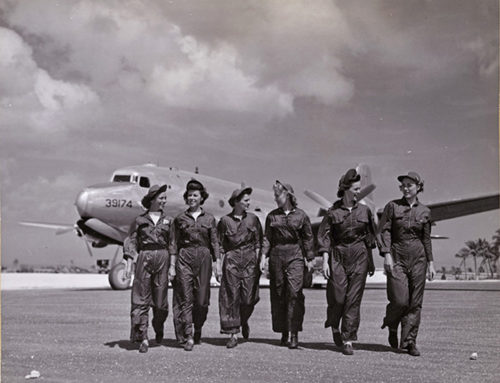The idea of the torpedo is much older than one might think. The term “sea mine” was first used in the early 16th century when the Dutch would load vessels with large amounts of explosives and set them adrift to use against an enemy. In the 18th and early 19th century, inventors such as David Bushnell and Robert Fulton worked on finding ways to use these sea mines, or “torpedoes”, as these investors referred to them, in warfare. These were the precursors to today’s warheads.
Those who study submarine history know the story of Bushnell’s “torpedoes” all too well. These sea mines were floating kegs filled with gunpowder with the hopes that a light shake from an enemy ship would ignite the keg and destroy the British ship. Unfortunately, Bushnell’s submarine and “torpedoes” yielded few results, but set the stage for further developments in the field. Bushnell’s work on underwater explosives gave future inventors the necessary skills to understand the logistics of how a mine might work while submerged. Fulton continued with the development of sea mines, developing a system that would have a clockwork mechanism that could be set and then explode five to ten minutes later. Robert Fulton is best known for creating the first commercial steamboat the Clermont in 1807. However, Fulton contributed more than just a steamboat to the waterways. In 1801, Fulton developed what some believe to be the first practical submarine, which he called Nautilus. Fulton believed that designing a submerged vessel which could carry a torpedo would put an end to maritime wars. In 1797, he stated, “Should some vessels of war be destroyed by means so novel, so hidden and so incalculable he confidence of the seamen will vanish and the fleet rendered useless from the movement of the first terror.”[1]
 Figure 2 Cross section through “plunging boat” showing “chambers for submarine bombs. Sketch by Fulton 1806. Figure 2 Cross section through “plunging boat” showing “chambers for submarine bombs. Sketch by Fulton 1806. |
Fulton’s original design for a submarine was for the French, but the government rejected the idea, viewing it as a dishonorable way to fight. Using his own funds, Fulton built the vessel hoping to change minds using a functioning prototype. The Nautilus introduced stealth strategy to naval warfare and allowed the torpedo to be mobile. His design included a collapsible mast and sail which provided surface propulsion. A hand-turned propeller allowed the vessels to move while submerged. One unique feature was the use of copper sheets over the iron-ribbed hull. He was the first to use the term “torpedo” to describe a gun powdered device that would explode beneath ships. Compared to the torpedoes of today, Fulton’s torpedoes were merely floating
mines since the idea of self-propulsion had not been developed yet. In 1801, he sank a small ship using his submarine mine with an explosive charge of 20 tons of gunpowder. On October 18, 1805, he succeeded in sinking the 200-ton brig Dorothea. – a first in naval history. The overall premise of his design consisted of a cable with a mine
|
|
connected to the ends. Fulton would release the mine in such a way that it would snag the target’s bow, drawing the mines into contact with the ship’s sides as it went by. Compared to previous attempts of his that had failed, he decided to make each mine heavier, ensuring that they would sink beneath the surface and remain underneath the ship undetected. Fulton concluded that a weighted mine beneath the surface, rather than floating on top as in previous designs, would be successful in destroying a ship’s hull. Fulton would end up scrapping Nautilus and began designing a larger vessel that was never built. Disinterest from France and England led Fulton to draw up designs for the United States and Jefferson who had been in correspondence with Fulton during his time abroad. In 1806, he submitted many designs to the government for their review. Despite Jefferson’s interest in his designs, Fulton’s demonstrations did not live up to his success with the Dorothea. With the success of his steamboat, Fulton would leave behind his submarine designs to focus his energy on other ventures. Despite his focus on his commercial enterprises, Fulton remained adamant in his belief that torpedoes could end Naval warfare. In 1813, Jefferson urged Fulton not to give up his submarine work. He wrote to Fulton that, “I confess I have more hopes of the mode of destruction by submarine than any other.”[2]
Fulton may have been the first to think of a torpedo’s offensive potential. After his death in 1815, torpedo development stagnated. However, it was used during the Civil War by both the North and South, most notably by Lt. William Barker Cushing in sinking the Confederate ram Albemarle at Plymouth, North Carolina in October 1864. Today’s submarines still utilize innovations that were made by Fulton. The conning tower design is like modern submarines. Fulton was also the first to use a compass underwater, rudders to steer and dive and compressed air tanks for breathing.
[All images of submarine sketches are from the collection at the Library of Congress. The collection is entitled {Submarine (“Submarine Vessel, Submarine Bombs and Mode of Attack”) for the United States government} The original images were created in 1806 by Robert Fulton.]
[1] https://49817097.weebly.com/submarine.html
[2] https://lancasteronline.com/opinion/the_scribbler/fulton-jefferson-and-torpedoes/article_bd8e59f2-11a2-11e4-8ffe-001a4bcf6878.html









